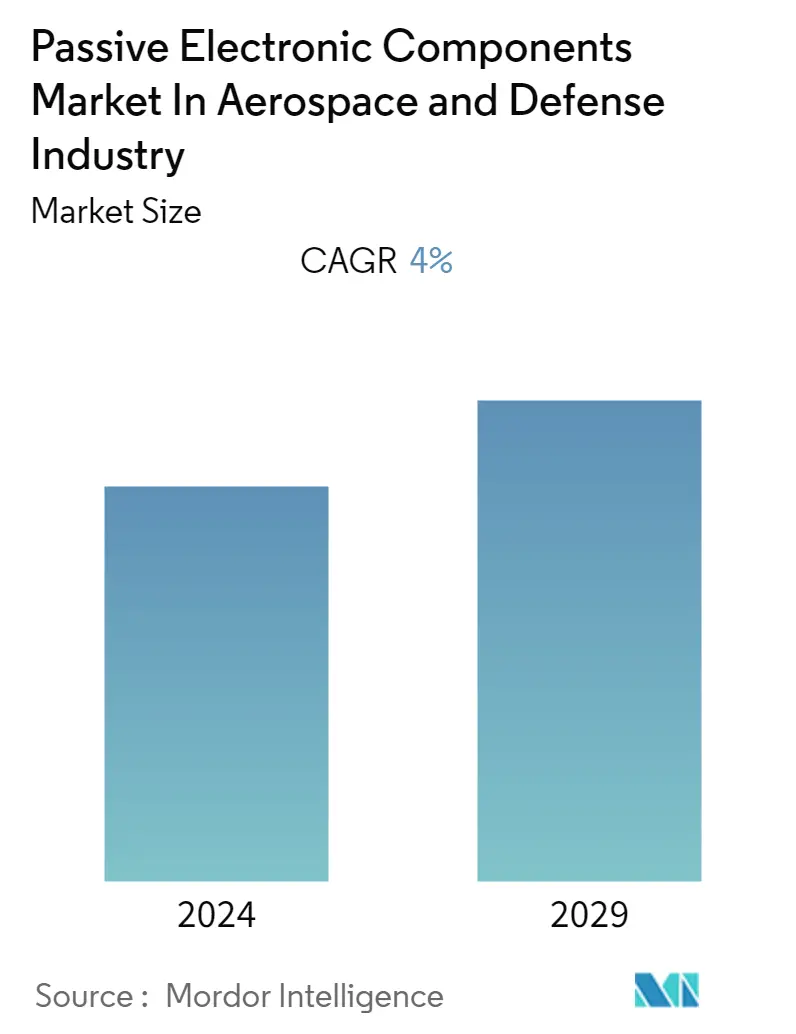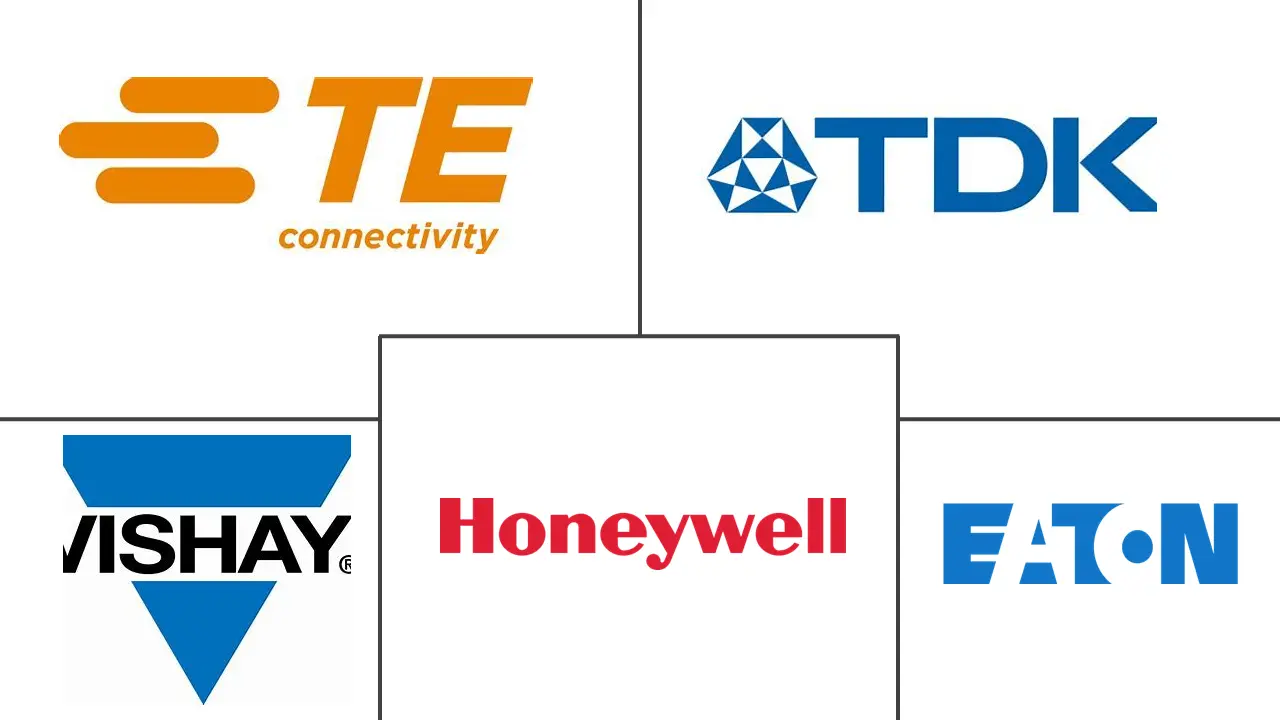Market Size of Passive Electronic Components Industry In Aerospace & Defense Industry

| Study Period | 2022 - 2029 |
| Base Year For Estimation | 2023 |
| CAGR | 4.00 % |
| Fastest Growing Market | Asia Pacific |
| Largest Market | North America |
| Market Concentration | Medium |
Major Players
*Disclaimer: Major Players sorted in no particular order |
Need a report that reflects how COVID-19 has impacted this market and its growth?
Passive Electronic Components Market Analysis
The passive electronic components market in the aerospace & defense industry is valued at USD 2.67 billion in the current year. It is expected to register a CAGR of around 4% during the forecast period to reach USD 3.4 billion by the end of the forecast period. The demand for passive electronics components in the aerospace and defense industry is projected to increase during the projected timeline. The defense electronics systems have to function reliably for their life while operating at broader temperature ranges and higher voltages, all while becoming lighter, smaller, and consuming less power.
- According to NASA, its spacecraft and various electronic devices are exposed to extreme radiation around Jupiter, which can cause significant damage. In executing several missions, NASA requires exceptionally reliable and durable high-voltage resistors for this application. Previously, companies such as Ohmcraft partnered with NASA to provide their resistors incorporated in NASA's Juno spacecraft to explore Jupiter.
- The rise in the demand for commercial and defense aircraft is one of the major factors driving the growth of the passive electronic components market in the aerospace & defense industry. Moreover, commercial aircraft manufacturers are expanding their manufacturing capacity to meet the rising demand for new aircraft, further supporting the growth of passive electronic components in the aerospace & defense industry.
- For instance, in February 2023, Air India, the Tata Group-owned carrier, announced the order for new and next-generation aircraft from manufacturers Boeing and Airbus. The company ordered 470 aircraft comprising 40 Airbus 350, 10 Boeing 777-9s, 20 Boeing 787, 190 Boeing 737 MAX single-aisle aircraft, and 210 Airbus A320/321 Neo.
- Moreover, many companies focus on developing military-grade passive electronic components to meet the demanding military and high-reliability application requirements. For instance, in February 2022, Gowanda Electronics announced the introduction of SMP0603, its first ceramic core chip inductor series for power applications. These high-performance chip inductors can also be utilized in RF applications in the military markets and are ideal for use in test and measurement, industrial control, and automotive sectors.
- Furthermore, the market is also witnessing increased adoption of Tantalum capacitors. For instance, KEMET recently introduced KO-CAP, a new line of Tantalum capacitors with a rated voltage of 2.5V to 63V and a capacitance of 10-1000 microfarad for a temperature of 105 to 125 degree Celsius for harsh operating conditions in military and aerospace.
- The COVID-19 pandemic shut down a lot of avenues of raw materials and bulk electronic components, leaving electronics manufacturers with half-finished products and idle capacity. Many members come from supply chains in Asia. As China was ground zero for COVID-19, the shortages started to affect manufacturers worldwide. Component shortages persisted in 2021 also, as many crucial raw materials were in low supply or completely unavailable. Furthermore, the component shortage is expected to persist until the end of the current year, resulting in a declining year-on-year growth.
Passive Electronic Components Market In Aerospace & Defense Industry Report Snapshots
- Passive Electronic Components Market In Aerospace & Defense Industry Market Size
- Passive Electronic Components Market In Aerospace & Defense Industry Market Share
- Passive Electronic Components Market In Aerospace & Defense Industry Market Trends
- Passive Electronic Components Market In Aerospace & Defense Industry Companies
